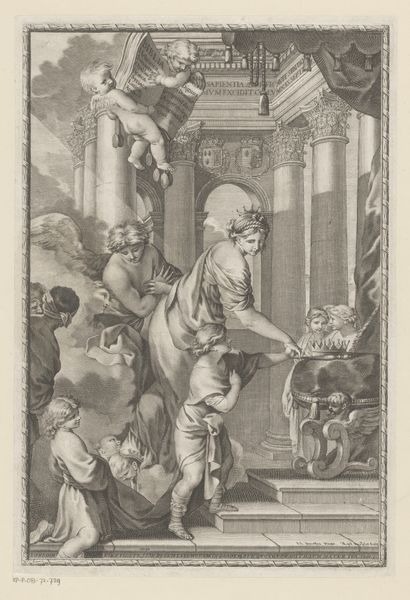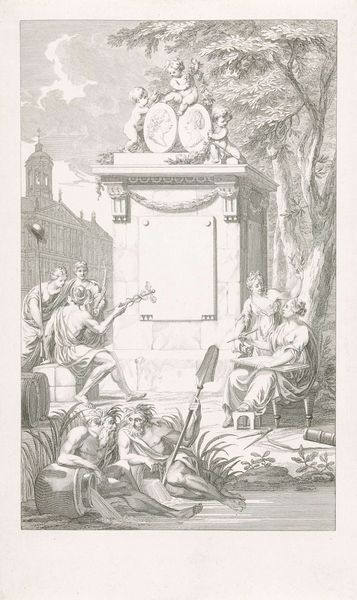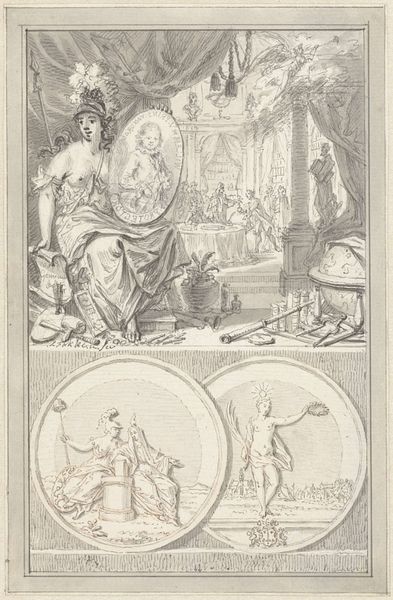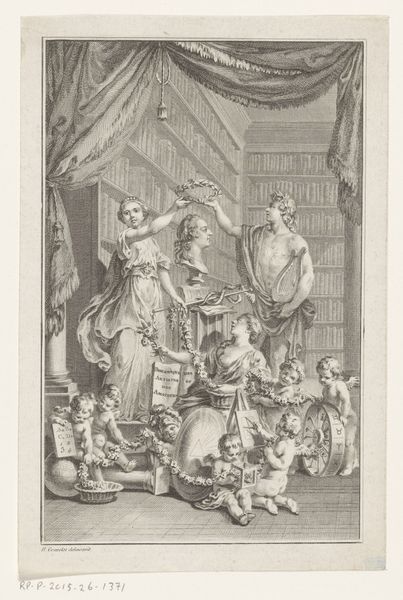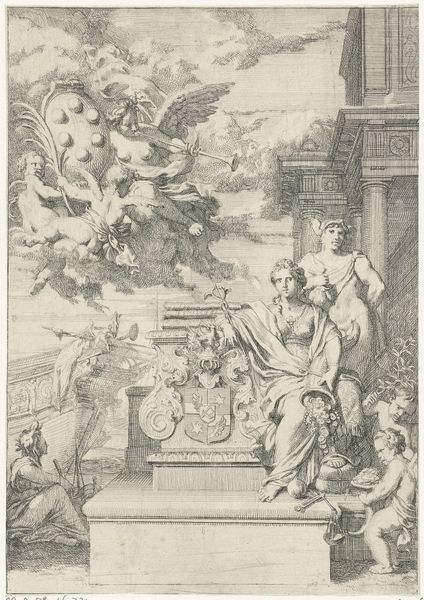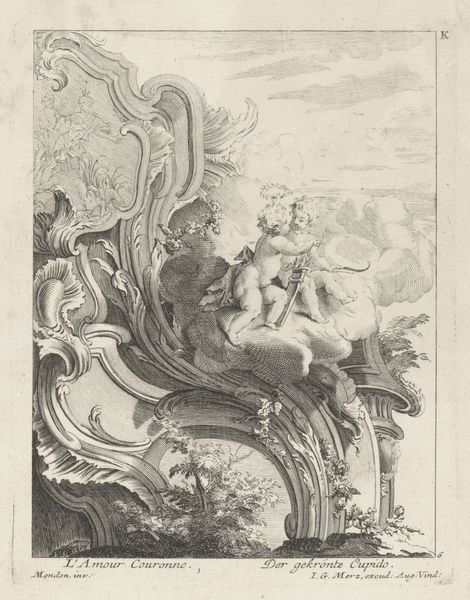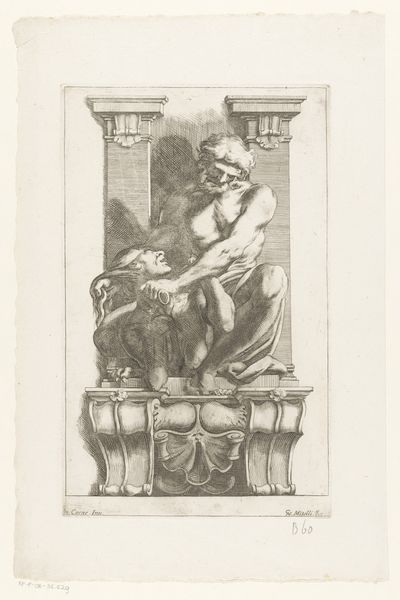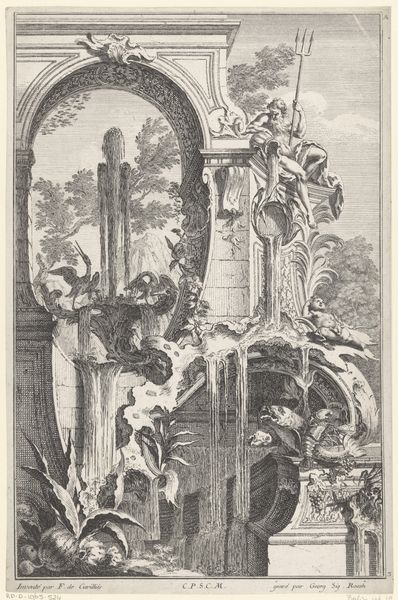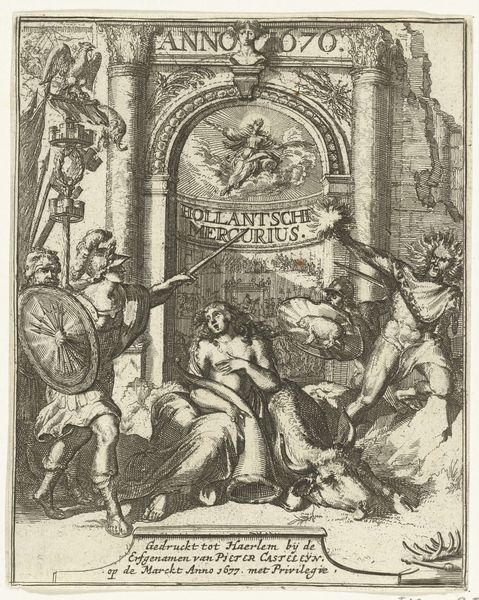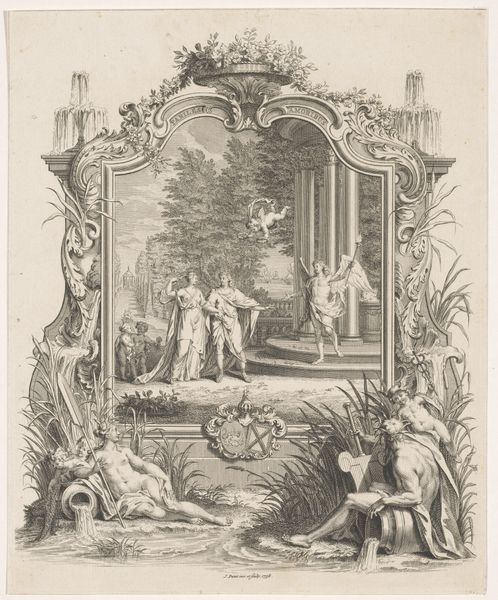
Ontwerp voor titelblad van een boek over tropisch planten 1673 - 1678
0:00
0:00
gerarddelairesse
Rijksmuseum
drawing, paper, ink
#
drawing
#
allegory
#
baroque
#
landscape
#
figuration
#
paper
#
ink
Dimensions: height 310 mm, width 201 mm
Copyright: Rijks Museum: Open Domain
Curator: This drawing, dating from between 1673 and 1678, is titled "Ontwerp voor titelblad van een boek over tropisch planten," or, Design for a Title Page of a Book on Tropical Plants, by Gerard de Lairesse. It’s held here at the Rijksmuseum. Editor: It’s evocative! There's an allegorical figure seated grandly amidst a classical structure overtaken by exotic foliage. The muted tones lend it an almost dreamlike quality, a formal yet organic composition. Curator: Precisely. Lairesse, working in ink on paper, designs the image as a frontispiece, signaling knowledge production tightly interwoven with colonial endeavors. It embodies Baroque ideals adapted to the Dutch context. Editor: Notice how the human figures—both the classical statues and the men tending the plants—frame this implied acquisition and application of knowledge. The whole drawing feels organized, constructed, and symbolic. How was this paper produced, who supplied the inks, and where was it ultimately printed? Curator: Excellent questions. The paper's likely of European origin, but considering Lairesse’s clientele and the depicted subject, accessing such "tropical" botany depended on vast trade networks fueled by exploitation. Those resources would likely be sourced through Dutch colonial holdings in Southeast Asia. Editor: I’m especially interested in how the arrangement serves to underscore certain ideologies. We have what seems to be a classical garden, with a white, seated allegorical figure surrounded by darker-skinned servants, as well as statues seemingly acting as supports, suggesting an order to things, an intellectual hierarchy, you might say. Curator: The use of allegory serves to elevate natural history, recasting botanical studies into the register of art. And beyond Lairesse’s vision, the drawing’s materiality brings us to the systems that sustained this very type of knowledge and visual culture, doesn’t it? Editor: Definitely. De Lairesse's sophisticated technique provides us with much to unpack. This piece demonstrates that in visual art the very choice of composition holds loaded meanings. Curator: And its execution and dissemination depended on structures of production that, I think, complicate our encounter with it today.
Comments
No comments
Be the first to comment and join the conversation on the ultimate creative platform.
